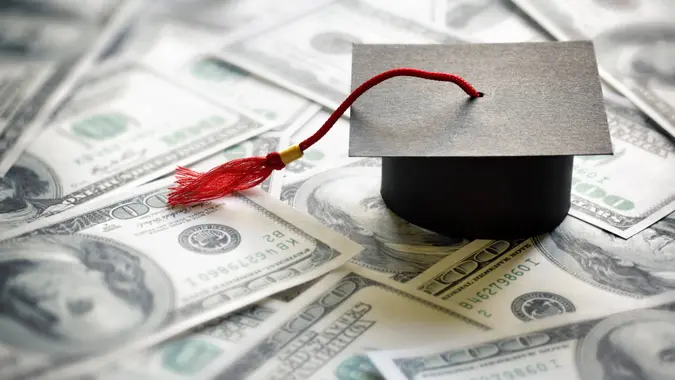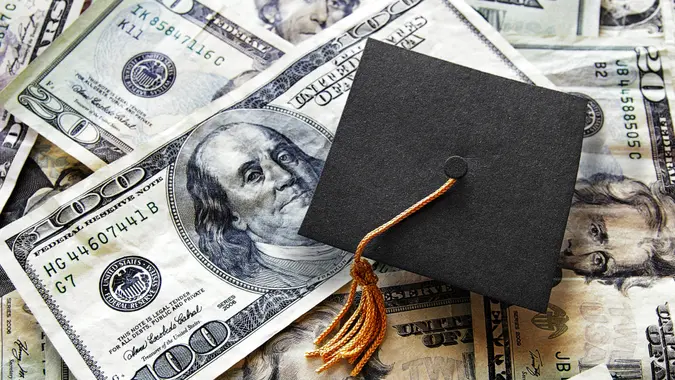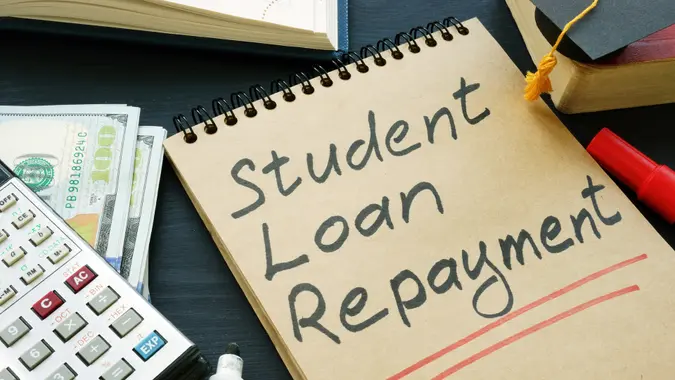Costs of Student Loan Forgiveness to Taxpayers Nearly Double Initial Estimate — How It Breaks Down

Commitment to Our Readers
GOBankingRates' editorial team is committed to bringing you unbiased reviews and information. We use data-driven methodologies to evaluate financial products and services - our reviews and ratings are not influenced by advertisers. You can read more about our editorial guidelines and our products and services review methodology.

20 Years
Helping You Live Richer

Reviewed
by Experts

Trusted by
Millions of Readers
In January, President Biden proposed a revamp of the student loan income-driven repayment (IDR) program that would cost taxpayers $138 billion over ten years. However, the Congressional Budget Office (CBO) released a revised estimate yesterday predicting the change would actually come with a price tag of $230 billion — or higher.
Initially, the White House calculated that the new program implementation would cost $77 billion for outstanding loans and $61 billion for new loans. The CBO’s recent estimate reflects $76 billion in existing debt and $154 billion in future debt, attributing the substantial increase in projected new loans to:
- More borrowers taking advantage of the plan
- Schools increasing tuition to capitalize on the demand
- The government automatically enrolling delinquent borrowers into the plan
If the Supreme Court rules against Biden’s student loan cancellation plan of up to $20,000 in debt forgiveness per borrower, taxpayers can likely expect an even larger bill over the next decade. In this instance, the CBO projects an additional $46 billion in program costs, bringing the total to $276 billion. That’s because borrowers will flock to the plan as their next best option.
If the proposed IDR plan, which would replace the current REPAYE plan, goes into effect, the lowest-earning borrowers would benefit from an 83% reduction in lifetime payments per dollar borrowed. Currently, Parent PLUS loan holders are ineligible for the new program.
 Written by
Written by  Edited by
Edited by 























